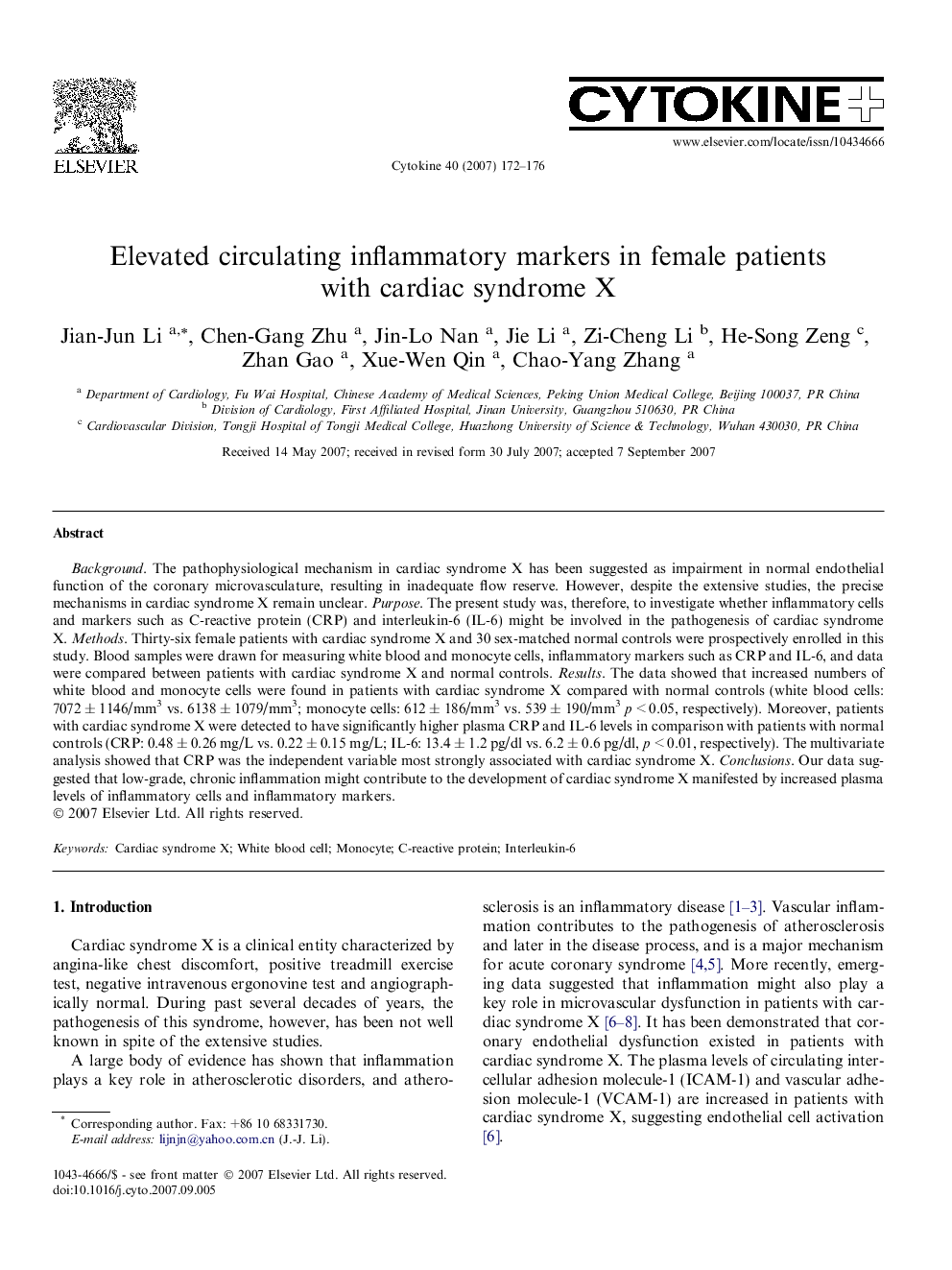| Article ID | Journal | Published Year | Pages | File Type |
|---|---|---|---|---|
| 2795217 | Cytokine | 2007 | 5 Pages |
Abstract
Background. The pathophysiological mechanism in cardiac syndrome X has been suggested as impairment in normal endothelial function of the coronary microvasculature, resulting in inadequate flow reserve. However, despite the extensive studies, the precise mechanisms in cardiac syndrome X remain unclear. Purpose. The present study was, therefore, to investigate whether inflammatory cells and markers such as C-reactive protein (CRP) and interleukin-6 (IL-6) might be involved in the pathogenesis of cardiac syndrome X. Methods. Thirty-six female patients with cardiac syndrome X and 30 sex-matched normal controls were prospectively enrolled in this study. Blood samples were drawn for measuring white blood and monocyte cells, inflammatory markers such as CRP and IL-6, and data were compared between patients with cardiac syndrome X and normal controls. Results. The data showed that increased numbers of white blood and monocyte cells were found in patients with cardiac syndrome X compared with normal controls (white blood cells: 7072 ± 1146/mm3 vs. 6138 ± 1079/mm3; monocyte cells: 612 ± 186/mm3 vs. 539 ± 190/mm3p < 0.05, respectively). Moreover, patients with cardiac syndrome X were detected to have significantly higher plasma CRP and IL-6 levels in comparison with patients with normal controls (CRP: 0.48 ± 0.26 mg/L vs. 0.22 ± 0.15 mg/L; IL-6: 13.4 ± 1.2 pg/dl vs. 6.2 ± 0.6 pg/dl, p < 0.01, respectively). The multivariate analysis showed that CRP was the independent variable most strongly associated with cardiac syndrome X. Conclusions. Our data suggested that low-grade, chronic inflammation might contribute to the development of cardiac syndrome X manifested by increased plasma levels of inflammatory cells and inflammatory markers.
Related Topics
Life Sciences
Biochemistry, Genetics and Molecular Biology
Endocrinology
Authors
Jian-Jun Li, Chen-Gang Zhu, Jin-Lo Nan, Jie Li, Zi-Cheng Li, He-Song Zeng, Zhan Gao, Xue-Wen Qin, Chao-Yang Zhang,
